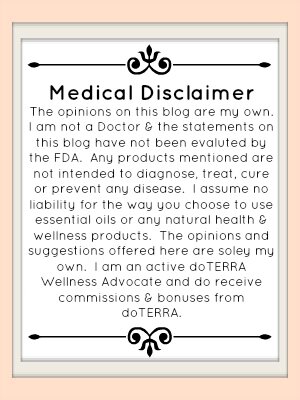Essential Oils—are wrung—The Attar from the Rose
Be not expressed by Suns—alone—It is the gift of Screws—
The General Rose—decay—But this—in Lady’s Drawer
Make Summer—When the Lady lie, In Ceaseless Rosemary—
~Emily Dickinson
Welcome Back….
…to another week of Herbal Medicine Kit!
Today we are looking more in-depth at a variety of herbs:
Arnica
St. Johns Wort
And also Essential Oils:
Marjoram
Chamomile
Eucalyptus
Peppermint
Rosemary
Cinnamon
Clove
Pull up a comfy seat, make sure you have your herbal tea of choice, and settle-in for a good summers read!
Arnica
Arnica Montana
Arnica herb, known for its medicinal properties is a genus of 30 species. This plant belongs to the Asteraceae family of sunflowers. It offers many benefits and therefore, finds an important place in the list of medicinal herbal plants. Arnica plant is mainly found in Europe and North America. However, eastern region of Asia also has many Arnica species. In olden days, the North Americans used this medicinal herb for improving blood circulation and in the treatment of sore throat. These people also used the herb as a febrifuge. A febrifuge is a medicine used in the treatment of fever. Following are some of the arnica uses which will help you to get a wider view of this herb.
The use of arnica for medicinal purposes has a long history. This plant was used by the famous German poet, Goethe in the treatment of chest pain. Tea prepared from leaves of arnica was used by Goethe for the treatment of chest pain. It is important to note that one shouldn’t take arnica without the guidance of a medical practitioner. Arnica is most commonly used as a topical medicine i.e. for the treatment of skin disorders. However, there are many other purposes for which this herb can be used.
The herb is effective in the treatment of pain. A component called sesquiterpene lactone present in this herb is helpful in the healing of pain. Applying arnica externally results in proper blood circulation to that specific body part. The increase in blood supply automatically warms that body part and reduces pain to a great extent.
Arnica oil is mainly used for the treatment of injuries, bruises, swellings, sprains and dislocation. The macerated oil especially proves to be helpful in the treatment of strained muscles and bruises. The macerated arnica oil is prepared by infusing the arnica plant in a certain base oil. Muscle relaxation is one of the important benefits of arnica oil. It helps by reducing the soreness of muscles.
The oils obtained from flowers, roots and rhizomes of arnica plant are used in the preparation of perfumes; these are volatile oils present in small amounts. Arnica is used in reducing the recovery time of physical trauma; it is also used to recover from overexertion. Arnica oil is used for stimulation of hair follicles and rejuvenation of scalp. Creams made from arnica are used to provide temporary relief from skin-related problems like sunburn. Similarly, insect bites can also be treated with medications that are prepared from arnica. The sesquiterpene lactone component of arnica also acts as anti-inflammatory agent.
St. Johns Wort
St. Johns Wort – John The Baptist’s Herb
St. John’s wort is a common meadowland plant that has been used as a medicine for centuries. Early European and Slavic herbals mention it. The genus name Hypericum is from the Latin word hyper, meaning “above,” and icon, meaning “spirit.” The herb was once hung over doorways to ward off evil spirits or burned to protect and sanctify an area.
The species name perforatum refers to the many puncturelike black marks on the underside of the plant’s leaves. Some sources say the plant is called St. John’s wort because it blooms on St. John’s Day (June 24); others say it was St. John’s favorite herb, and still others note that the deep red pigment in the plant resembles the blood of the martyred saint.
Whatever its name origin, St. John’s wort has a number of uses. It has been used to relieve muscle problems and to ease muscle injuries; it also reduces swelling and is used in certain herbal remedies to treat depression and anxiety.
Uses for St. John’s wort
St. John’s wort has long been used medicinally as an anti-inflammatory for strains, sprains, and contusions. St. John’s wort also has been used to treat muscular spasms, cramps, and tension that results in muscular spasms.
The plant, especially its tiny yellow flowers, is high in hypericin and other flavonoid compounds. If you crush a flower bud between your fingers, you will release a burgundy red juice — evidence of the flavonoid hypericin. St. John’s wort oils and tinctures should display this beautiful red coloring, which indicates the presence of the desired flavonoids.
Bioflavonoids, in general, serve to reduce vascular fragility and inflammation. Since flavonoids improve venous-wall integrity, St. John’s wort is useful in treating swollen veins. St. John’s wort preparations may be ingested for internal bruising and inflammation or following a traumatic injury to the external muscles and skin.
The oil is also useful when applied to wounds and bruises or rubbed onto strains, sprains, or varicose veins. When rubbed onto the belly and breasts during pregnancy, the oil may also help prevent stretch marks. Topical application is useful to treat hemorrhoids and aching, swollen veins that can occur during pregnancy.
St. John’s wort is reported to relieve anxiety and tension and to act as an antidepressant. It was once thought that hypericin interfered with the body’s production of a depression-related chemical called monoamine oxidase (MAO), but recent research has shed doubt on this claim. Research now is focusing on other constituents, such as hyperforin and flavonoids.
Studies have shown St. John’s wort extracts may exert their antidepressant actions by inhibiting the reuptake of the neurotransmitters serotonin, norepinephrine, and dopamine. The required dosage is three grams of powder per day, but it must be taken for weeks — and sometimes several months — before results are noted.
St. John’s wort is useful for pelvic pain and cramping. According to the 1983 British Pharmacopoeia, St. John’s wort is specifically indicated for “menopausal neuroses”: Many women who experience anxiety, depression, and other emotional disturbances during menopause may benefit from this herb’s use.
The National Cancer Institute has conducted several studies showing that St. John’s wort has potential as a cancer-fighting drug. One study showed that mice injected with the feline leukemia virus were able to fight off the infection after just a single dose of St. John’s wort.
St. John’s wort can have many positive effects, if used correctly in herbal remedies to treat mood disorders and physical afflictions. Below are some tips on how to use this powerful herb.
Preparations and Dosage
The fresh buds and leaves can be made into oils for topical use or dried for teas and capsules. Oils are made by soaking pureed leaves and flowers in olive oil for four to six weeks.
Unlike most herbal oils, St. John’s wort should be processed in direct sunlight. Below are some basic recipes for St. John’s wort tea and tincture.
Herbal Tea: Infuse 2 to 3 teaspoons per cup of hot water. Drink several cups of tea a day.
Tincture: Take 1/2 to 3/4 teaspoon, every four to eight hours.
Precautions and Warnings
Luckily, St. John’s wort is a very mild herb and can be used fairly safely in herbal remedies. It does not bear any precautions or warnings, other than photosensitivity in very sensitive people.
St. John’s wort doesn’t have many known side effects.
With long-term use, the hypericin in St. John’s wort may make the skin of a few sensitive individuals more sensitive to sunlight — a condition known as photosensitivity. After eating large quantities of the herb, cattle developed severe sunburn and blistering.
Yet, after taking precaution with the sun, St. John’s wort can be a useful way to relieve muscle problems, depression and anxiety.
Essential Oils
Chamomile
Chamomile Essential Oil
Botanical Name: Arthemis nobilis or Chamaemelum nobile
Common Method Of Extraction: Steam distilled
Parts Used: Flowers
Note Classification: Middle
Aroma: Fresh, rich, sweet, fruity, apple-like aroma
Largest Producing Countries: USA, Hungary, Italy, and France
Traditional Use: Chamomile has been used as a strewing herb. The oil is used in perfumery and has a high ester content which makes this oil a valuable antispasmodic.
Properties: Analgesic, antibacterial, anti-inflammatory, antimicrobial, antineuralgic, antiphlogistic, antiseptic, antispasmodic, carminative, cholagogue, digestive, emmenagogue, febrifuge, hepatic, sedative, stomachic, sudorific, tonic, vermifuge, vulnerary
Benefits: Boils, burns, cuts, dermatitis, earache, fevers, hair care, headache, indigestion, inflammations, insect bites, insomnia, migraine, muscular pain, nausea, nervous tension, sprains, stress related complaints, toothache, wounds. Roman chamomile gives a blend a warm fruity note.
Blends Well With: Bergamot, clary sage, eucalyptus, geranium, grapefruit, jasmine, lavender, lemon, neroli, oakmoss, palmarosa, rose, tea tree
Of Interest: In ancient Egypt chamomile was used as an offering to the sun god. Roman chamomile is used in aromatherapy for its skin benefiting properties, and it adds a calming aspect to a blend, which may help in times of tension.
Chamomile Differences:
Blue Chamomile essential oil Has a high content of azulene, the active organic compound of chamomile, which bears a blue color. azulene has anti-inflammatory, skin healing properties. This oil is most suitable as an ingredient for skin care products. Blue chamomile is derived from the German chamomile plant, which is an upright growing annual. There are German chamomile plants that were breed for a high azulene content to use in the manufacturing of medicinal chamomile products.
Roman Chamomile essential oil Is used for its skin healing properties in the manufacturing of body care products, as well as for aromatherapy. It has a very pleasant, soothing, apple-like aroma. The Roman chamomile plant is a low growing, perennial ground cover.
Moroccan Chamomile essential oil Is not from a true chamomile plant. It is used mainly in perfume blends, and for aromatherapy. The plant is an annual that grows in the Mediterranean and in the Middle East. This is a product new to the market, it does not have a long history of traditional uses like true chamomile.
Safety Data: May cause skin irritation.
Cinnamon
Cinnamon Essential Oil
Botanical Name: Cinnamomum zeylanicum
Common Method Of Extraction: Steam distilled
Parts Used: Dried inner bark
Note Classification: Base to Middle
Aroma: Warm, dry, herbal spice
Largest Producing Countries: Sri Lanka, Vietnam, Madagascar, and India
Traditional Use: Cinnamon has a long history of culinary and medicinal uses. Its high aldehyde content makes it a useful antimicrobial and antiseptic.
Properties: Analgesic, antibacterial, antifungal, anti-inflammatory, antimicrobial, antiseptic, antispasmodic, aphrodisiac, astringent, carminative, digestive, expectorant, stimulant, stomachic, vermifuge
Benefits: Colds, cough, diarrhea, flatulence, infection, insect bites, nervous exhaustion, slow circulation, stomach cramps, stress, toothache. Cinnamon is a good addition to a blend for disinfecting the air.
Blends Well With: Benzoin, bergamot, cardamom, clove, frankincense, ginger, grapefruit, lemon, mandarin, marjoram, nutmeg, orange, peppermint, peru balsam, petitgrain, rose, vanilla, ylang ylang.
Of Interest: Cinnamon has been a highly prized commodity since antiquity and is one of the most recognizable scents in the world. Cinnamaldehyde is the main constituent in the bark oil. It is used in perfumery to give a blend lift and strength, and is considered a mild fixative. Use this oil with caution in soap making, because it may darken the color of your product.
Safety Data: Avoid while pregnant and in liver or kidney disease. Do not use on skin. Not for internal use.
Clove
Clove Essential Oil
Botanical Name: Syzygium aromaticum
Common Method Of Extraction: Steam distilled
Parts Used: Flower buds
Note Classification: Middle
Aroma: Warm, spicy, woody, with a slightly fruity top note
Largest Producing Countries: Sri Lanka, Indonesia, and Madagascar
Traditional Use: This oil is usually associated with dental preparations due to its analgesic properties. Clove also has a long history in Chinese medicine.
Properties: Analgesic, antiaging, antibacterial, anticlotting, antifungal, anti-inflammatory, antimicrobial, antispasmodic, antioxidant, antiseptic, antiviral, carminative, expectorant, insecticide, stimulant, stomachic
Benefits: Exhaustion, flatulence, indigestion, insect repellent, muscle pain, nausea, sprains, stale breath, toothache, ulcers, wounds. Clove oil is high in eugenol. This constituent gives this oil analgesic properties.
Blends Well With: Allspice, bay, bergamot, chamomile, clary sage, geranium, ginger, grapefruit, jasmine, lavender, lemon, mandarin, palmarosa, rose, sandalwood, vanilla, ylang ylang
Of Interest: Clove oil will darken or thicken with age and exposure to air.
Safety Data: Avoid while pregnant and in liver and kidney conditions. May cause skin irritation.
Eucalyptus
Eucalyptus Essential Oil
Botanical Name: Eucalyptus globulus
Common Method Of Extraction: Steam distilled
Parts Used: Leaves and twigs
Note Classification: Top
Aroma: Fresh, penetrating, woody, camphoraceous
Largest Producing Countries: Australia, Brazil, and Spain
Traditional Use: Eucalyptus is one of the oldest native medicines used in Australia. It is known now for its use in inhalants and vapor rubs, and as a household disinfectant and cleaner.
Properties: Analgesic, antibacterial, antifungal, antineuralgic, antirheumatic, antiseptic, antispasmodic, antiviral, decongestant, deodorant, depurative, diuretic, expectorant, febrifuge, stimulant, vermifuge, vulnerary
Benefits: Blisters, bruises, burns, chills, colds, cough, fever, headache, insect bites, lack of concentration,mental exhaustion, muscular aches and pains, respiratory infection, skin infections, skin ulcers, slow circulation, sprains, throat infections, wounds. Eucalyptus is often added to inhalations, oils, and ointments. The antiviral and antibacterial actions of this oil can be taken advantage of by adding it to a disinfectant blend for a diffuser to cleanse the air.
Blends Well With: Cedarwood, chamomile, cypress, geranium, ginger, grapefruit, juniper, lavender, lemon, marjoram, peppermint, pine, rosemary, thyme
Of Interest: The word eucalyptus is derived from Greek meaning “well covered”. This refers to part of the calyx that initially covers the flower.
Safety Data: Avoid while pregnant and with homeopathics. May cause skin irritation.
Marjoram
Marjoram Essential Oil
Botanical Name: Marjorana hortensis
Common Method Of Extraction: Steam distilled
Parts Used: Flowering plant
Note Classification: Middle
Aroma: Bright, sweet, balsamic
Largest Producing Countries: Hungary and Egypt
Traditional Use: Utilized both as a culinary and medicinal herb. It is considered a comforting herb.
Properties: Analgesic, antioxidant, antiseptic, antispasmodic, antiviral, carminative, cephalic, diaphoretic, digestive, diuretic, emmenagogue, expectorant, nervine, sedative, tonic, vasodilator, vulnerary
Benefits: Bruises, colds, constipation, coughs, flatulence, headache, head congestion, menstrual problems, muscular aches and stiffness, sore throats, strains.
Blends Well With: Basil, bergamot, black pepper, cedarwood, chamomile, cypress, eucalyptus, eucalyptus lemon, fennel, juniper, lavender, lemon, orange, peppermint, pine, rosemary, tea tree, thyme
Of Interest: The Greeks referred to this plant as the joy of the mountains and considered it a symbol of happiness.
Safety Data: Avoid while pregnant.
Peppermint
Peppermint Essential Oil
Botanical Name: Mentha piperita
Common Method Of Extraction: Steam distilled
Parts Used: Flowering plant
Note Classification: Top
Aroma: Fresh, very minty, hot, herbaceous, with a vegetative back note
Largest Producing Countries: Hungary, USA, and Egypt
Traditional Use: Has many culinary and pharmaceutical uses. It is also used for its soothing qualities on the digestive system.
Properties: Analgesic, antibacterial, anti-inflammatory, antifungal, antimicrobial, antiseptic, antispasmodic, astringent, carminative, cholagogue, cordial, digestive, emmenagogue, expectorant, febrifuge, insecticide, nervine, sedative, stimulant, stomachic, vasoconstrictor, vermifuge
Benefits: Colds, cough, cramps, exhaustion, fainting, fever, flatulence, flu, halitosis, headache, hysteria, indigestion, insect bites, mental fatigue, migraine, motion sickness, mouth or gum infections, muscular pain, nausea, nerve pain, nervous disorders, poor circulation, toothache, travel sickness. Diffusing peppermint into the air may help with many ailments, from headaches to an upset stomach.
Blends Well With: Basil, benzoin, black pepper, cypress, eucalyptus, geranium, grapefruit, juniper, lavender, lemon, marjoram, niaouli, pine, ravensara, rosemary, tea tree
Of Interest: Mild climate stress in the growing conditions of the plant increases the oil content and sesquiterpene levels in the oil.
Safety Data: Avoid in epilepsy and while pregnant. May cause skin irritation. Avoid with homeopathics.
Rosemary
Rosemary Essential Oil
Botanical Name: Rosmarinus officinalis
Chemotype: Cineole
Common Method Of Extraction: Steam distilled
Parts Used: Flowering tops
Note Classification: Middle
Aroma: Strong, fresh, camphor-like and with a woody-balsamic undertone
Largest Producing Countries: Spain, France, and Tunisia
Traditional Use: Best known for its aid in memory and hair loss. It is also considered a symbol of love, and the sprigs have been traditionally used in wedding ceremonies.
Properties: Analgesic, antiarthritic, antibacterial, antioxidant, antirheumatic, antiseptic, antispasmodic, aphrodisiac, astringent, carminative, cholagogue, cordial, decongestant, diaphoretic, digestive, diuretic, emmenagogue, expectorant, fungicidal, hepatic, hypertensive, nervine, restorative, rubefacient, stimulant, stomachic, sudorific, tonic, vermifuge, vulnerary
Benefits: Colds, constipation, coughs, dandruff, diarrhea, fainting, flatulence, flu, fluid retention, greasy hair, hangovers, headache, hysteria, insect repellant, memory loss, mental fatigue, migraine, muscle aches and pains, nervous disorders, sinus problems, slow circulation, sore muscles, tonic, varicose veins, whooping cough, wounds. Rosemary oil has many applications. Diffusing the oil into the air will disinfect the room. Using the oil in a massage oil may help with sore muscles.
Blends Well With: Basil, bergamot, black pepper, cedarwood, cinnamon, citronella, clary sage, elemi, eucalyptus , frankincense, geranium, grapefruit, lavender, lemon, litsea cubeba, mandarin, marjoram, niaouli, oregano, peppermint, petitgrain, pine, ravensara, tea tree, thyme
Of Interest: Rosmarinus is Latin for dew (ros) of the sea (marinus).
Safety Data: Avoid in epilepsy, hypertension, and while pregnant. Avoid with homeopathics.
***Special Thank You to Mountain Rose Herbs for the Aromatherapy Reference Materials!
Recap: Today we looked in-depth at several herbs and many, many essential oils.
Looking Ahead: Next time we get together we will be making a lot of recipes: Tincture of St. Johns Wort, Strain and Sprain Compress AND 2 Oils, and a really nice Herbal Linement.
Reminder: Next week you will need many supplies; Arnica Flower Tincture, St. Johns Wort flowering tops, essential oils of Lavender, Marjoram, Chamomile, Eucalyptus, Peppermint and Rosemary.
This article may be hopping around the following Blog Hops: (mis)Adventures Mondays Blog Hop, The HomeAcre Hop, Wildcrafting Wednesday, Homestead Blog Hop, From the Farm Fridays, Simple Saturdays Blog Hop, Simple Life Sunday Blog Hop.
Copyright Notice: This article may from time to time be contributed to third-party sites, but it is COPYRIGHTED, and it may not be used without my written permission. If you are interested in any of my articles, please contact Kat Yorba; Author and owner of Simply Living Simply directly for republishing information.
Affiliate Notice: Many of my blog posts contain affiliate links. Purchasing through an affiliate link does NOT increase the price you pay but allows me to keep blogging, sharing and bringing you great content.
Medical Disclaimer Notice: Nothing in this post is to be construed as medical advice, simply a sharing of things that have worked for me &my family. If you have any symptoms of serious illness, taking medication, pregnant or nursing, or have never worked with herbal materials or essential oils before, please consider consulting a medical professional before use. I am unable to offer advice for your particular medical situation; please ask your Doctor, Nurse Practitioner or Naturopath for further guidance. The statements made here have not been approved by the Food & Drug Administration. These statements are not intended to diagnose, treat, cure or prevent disease. This notice is in accordance and required by the Federal Food, Drug & Cosmetic Act.



























Speak Your Mind